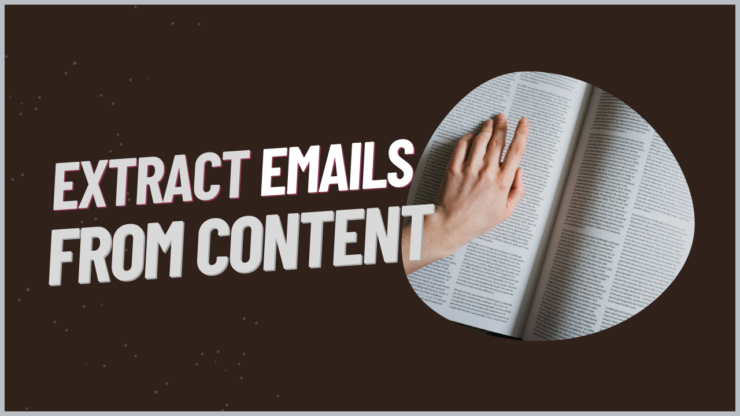Table of Contents
As businesses continue to leverage digital channels to reach their target audience, email remains one of the most effective and affordable ways to engage with customers and prospects. However, building an email list from scratch can be a daunting task. One of the easiest ways to start building your list is by extracting emails from content. In this article, we’ll explore the different methods for extracting email addresses, the tools available for the task, and best practices for ensuring that your efforts comply with relevant laws and regulations.
I. What is an Email Extractor?
An email extractor is a tool that searches through web pages, documents, and other digital content for email addresses. These tools use complex algorithms to scan the content, identify email addresses, and compile them into a list. An email extractor can be a valuable tool for businesses looking to build their email list or verify the accuracy of their existing list.
II. Methods for Extracting Email Addresses
There are several methods for extracting email addresses from content, including:
- Manual Search: One of the simplest methods for extracting email addresses from content is a manual search. This involves scanning the content for email addresses, highlighting them, and copying them into a list. While this method is straightforward, it can be time-consuming and is prone to errors.
- Regular Expressions: Regular expressions are a powerful tool for extracting data from text. They are used to search for patterns in text and extract specific information, such as email addresses. Regular expressions can be customized to search for specific types of email addresses, making them a useful tool for businesses that need to extract email addresses from a large amount of content.
- Email Extractor Tools: Email extractor tools are software programs that automate the process of extracting email addresses from content. These tools can scan multiple pages at once, extract email addresses from different sources, and compile them into a list. Email extractor tools can be either free or paid, and they offer varying degrees of accuracy and functionality.
- Data Scraping Methods: Data scraping methods involve using software programs to extract information from web pages and other digital sources. These programs can be customized to search for specific types of information, such as email addresses. While data scraping can effectively extract email addresses, ensuring that your efforts comply with relevant laws and regulations is imperative.
III. Email Extractor Tools
There are many email extractor tools available, ranging from free online tools to premium software programs. Here are some of the most popular options:
- Hunter.io is a popular email extractor tool that allows users to find and verify email addresses. The tool offers a free plan that allows users to perform up to 50 searches per month. The paid plans offer additional functionality, such as bulk searches and integrations with other tools.
- Snov.io is another popular email extractor tool that allows users to find and verify email addresses. The tool offers a free plan that allows users to perform up to 50 searches per month. The paid plans offer additional functionality, such as bulk searches and integrations with other tools.
- Finder.io is a web-based email extractor tool that allows users to extract email addresses from web pages, documents, and other sources. The tool is free to use, and it offers a simple and intuitive user interface.
IV. Best Practices for Extracting Email Addresses
While email extractor tools can be a valuable resource for building your email list, it’s important to ensure that your efforts comply with relevant laws and regulations. Here are some best practices for extracting email addresses:
- Obtain Consent: Before adding someone to your email list, you must obtain their consent. This can be done through a signup form on your website or by asking for permission in person or over the phone. It’s essential to be transparent about how their email address will be used and to provide a clear and easy-to-understand opt-out process.
- Scrub Your List: Regularly scrubbing your email list is essential to maintain its accuracy and compliance with laws and regulations. Use email verification tools to ensure that the email addresses on your list are valid and remove any that bounce or are invalid.
- Comply with Laws and Regulations: Email marketing is subject to various laws and regulations, such as the CAN-SPAM Act and the General Data Protection Regulation (GDPR). Ensure your email marketing efforts comply with all relevant laws and regulations to avoid legal and financial consequences.
- Use Relevant and Valuable Content: To keep your email list engaged and active, make sure to provide valuable and relevant content in your email campaigns. This can include promotions, updates, and educational content tailored to your target audience’s interests.
V. As Final Words
Extracting email addresses from content is a simple and effective way to build your email list and engage with your target audience. Manual searches and regular expressions can be time-consuming and prone to errors, while email extractor tools offer automation and efficiency. However, it’s important to ensure that your email marketing efforts comply with relevant laws and regulations and that you provide valuable and relevant content to your subscribers. With these best practices in mind, you can build a high-quality email list and take advantage of the many benefits of email marketing.









Add comment